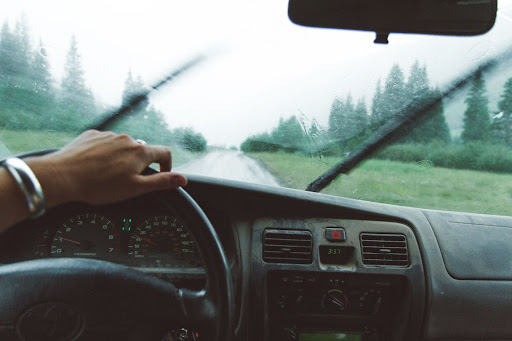Each year, there are various natural disasters throughout the United States. Depending on location and topography, residents need to face hurricanes, tornadoes, thunderstorms, floods, and more. Given their annual occurrence, you may be well-versed with shelter-in-place practices and could have even experienced what it’s like to get through a natural disaster.
However, if you find yourself on the road during a natural disaster, you need to adapt quickly and take spontaneous measures to ensure the safety of you and your fellow passengers. This article explores the various safety measures you need to take depending on the type of natural disaster.
Thunderstorms and Floods
Exercise caution while driving through heavy rain. If visibility is low, turn on your headlights to their highest setting and maintain at least a six-second gap to the car in front.
Ascertain the amount of water on the road. If it is shallow, continue to drive slowly towards a higher altitude area. Conversely, as reported by SafeMotorist, rising water levels can cause hydroplaning. If the conditions permit you to drive, make your way to the closest shelter. If not, park your vehicle on the side of the road and continue to walk towards a shelter, as you could trap yourself inside the car, making it hard for emergency services to reach you.
Additionally, thunderstorms often include occurrences of lightning which create an added risk. Avoid driving, walking, or taking shelter below isolated trees and objects that conduct electricity, such as barbed wires, electrical polls, etc.
Hail
Hail presents similar visibility and traction challenges as stated above. According to research, during hail, balls of ice can travel between 20-40 miles an hour and on impact can damage your windscreen, windows, and roof.
If you find yourself amid a hail storm, seek to drive to a nearby gas station, parking lot, or any place that can provide cover for your car. Using a portable hail cover is also a viable option if you have it.
Tornadoes
A vehicle is one of the most vulnerable places to be in during a tornado. If the tornado is close enough, high-speed winds can easily launch your car into the air. Additionally, debris such as dust, stones, trees, and more can fling in all directions.
Your best option is to drive to a nearby shelter and get indoors. However, if you aren’t close to any, take note of your surroundings for low-lying areas. Look for sturdy buildings or houses with basements. Do not camp at underpasses as you will experience stronger winds. The lower you will get, the safer you will be. Once you have found a safe spot, lie low and cover your head.
If you are far away from a tornado, you may be able to get away from it by driving at right angles to its trajectory.
Hurricanes
Certain states are prominent locations for hurricanes and monitor their development daily. You can expect to receive prior warnings for hurricanes and have some time to prepare. As soon as a warning is issued, ensure to fill up your gas tank, pack adequate food, water, clothes, and supplies to evacuate as early as possible.
Expect to endure traffic, high-speed winds, and water. Even if it’s slow-moving, keep your focus on the road. High winds can cause small vehicles to drag and can flip over large vans and even trucks. If your route is experiencing waterlogging, divert to an alternate route as soon as possible.
Regardless of the emergency, it is important to always have an emergency kit in your vehicle with the following items:
- Water bottles
- Non-perishable food items
- Flashlight with extra batteries
- First aid kit
- Fluorescent raincoats
- Jumper cables
- Wireless phone charger to keep your phone active for emergencies
To protect yourself from paying thousands of dollars in car repairs due to natural disasters it’s best to purchase comprehensive insurance for your vehicle. This type of insurance covers the costs of damage due to hail, thunderstorms, hurricanes, etc. up to the amount equaling the total value of your car minus the deductible.
When driving during a natural disaster, always remain vigilant and focus on getting to a shelter as soon as possible.
Image Source: Unsplash

